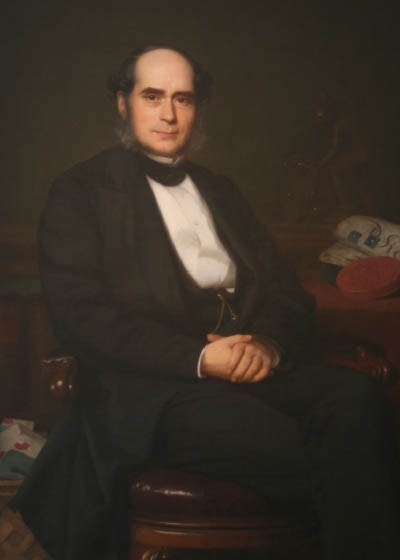Sir Henry Bessemer
We owe the process of bulk steel production to former Iron and Steel Institute President (1871-3) Sir Henry Bessemer, who in 1855, obtained British patents for a pneumatic steelmaking process.

Bessemer was born 19 January 1813, Charlton, Hertfordshire, England and died 15 March 1898 in London. He was the son of an engineer and typefounder and the family skills were passed own with Bessemer inventing movable stamps for dating government documents, machinery for sugar processing and fake gold powder from brass for use in paint.
When Bessemer turned his attention to metallurgy only two iron-based construction materials - cast iron made by the treatment of iron ore with coke in the blast furnace and wrought iron made from cast iron by puddling. ‘Steel’ was then made by adding carbon to pure forms of wrought iron.
During the Crimean War, Bessemer invented an elongated artillery shell that was rotated by powder gases. However, French authorities noted that cast-iron cannon would not be strong enough for this kind of shell. This set Bessemer on the search for a stronger cast iron.
Bessemer used a pear-shaped vessel lined with ganister, a refractory material containing silica, with air being blown up from the bottom through a charge of molten pig iron. Bessemer worked out that the resulting oxidation of the silicon and carbon in the iron would release heat and that, if a large enough vessel were used, the heat generated would more than offset that lost. A temperature of 1,650° C could thus be obtained in a blowing time of 15 minutes with a charge weight of about half a tonne.
His announcement of the process in 1856 before the British Association for the Advancement of Science in Cheltenham, Gloucestershire, created great interest. However, the process was imperfect, and others could not replicate his work – it turned out that Bessemer had unknowingly been using phosphorus-free iron. His resourcefulness came to the fore again and he found a phosphorus-free source of iron in northwest England and set up in the steel market on his own.
Once the issue of phosphorus was identified and solved, he licenced the process and ‘mild steel’ became commonplace in construction.
The invention of the open-hearth (Siemens-Martin) process in the late 1860s eventually outstripped that of the Bessemer process. This has now given way to more modern processes.
In 1873 he instituted the Bessemer Gold Medal, which is still awarded by IOM3 annually for outstanding services to the steel industry.
Bessemer never stopped inventing, even if some ideas were far from successful. His idea for a boat that reduced seasickness was a disaster and partially demolished a harbour, but this with machines for polishing diamonds helped to re-establish that trade in London. He was knighted in 1879 and made a Fellow of the Royal Society that same year.
IOM3 holds several items of interest related to Bessemer contact our Library team for information.







